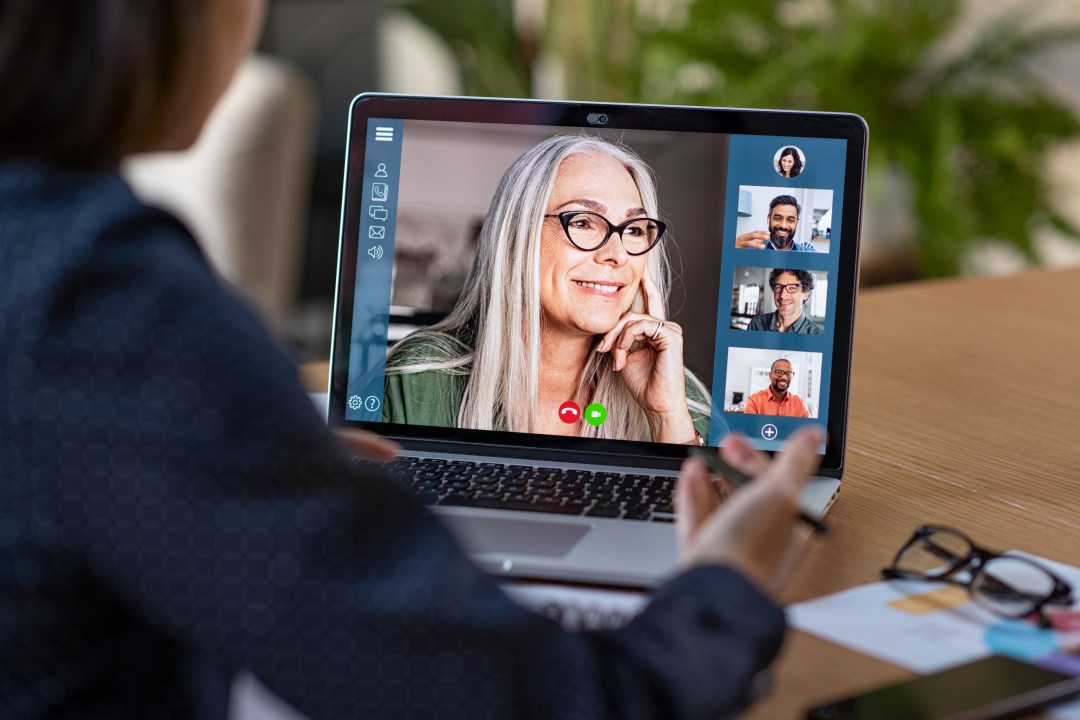Video call fatigue? 5 tips to ace your communication and achieve better outcomes
This blog sets out five tips to improve the clarity and impact of your communication.

The ability to communicate with clarity is essential if you wish to be heard and have your viewpoint understood. Whether at work or home, knowing how to engage others is paramount to building trust and creating collaborative relationships. Clarity tells people precisely what it is you want. Yet often people dive into conversations without adequately thinking through what it is they want to say, nor how others might think, feel and act. The result can be frustration and disappointment for all parties: the consequence is a missed opportunity to achieve better solutions.
Discussion via video conferencing can make effective communication even more of a challenge. The nature of video calls means it is harder to interpret visual clues such as body posture and physical gestures. We are used to the freedom of movement during meetings rather than sitting in a fixed position staring at a screen. It is easier to make connections with others as we benefit from the social interaction of small talk or having a drink. In-person meetings allow us to experience the presence of others in three-dimensions with all our available senses, and this helps to build rapport.
The limitations of video calls can include technical issues such as reduced bandwidth which can freeze the screen and interrupt the flow of conversation. There may also be difficulties with poor sound or vision, which can make it harder to interpret facial expression or verbal inflexions, such as tone of voice. The resulting frustration can spill into the discussion. The disruption can reduce concentration and detract from the quality of the conversation.
Here are five tips to help you improve the impact of your communication when on video calls:
1. Face the light
Move your screen so that you are illuminated by front-facing natural light. It allows the other person to see your eyes more clearly and thereby feel more connected. Natural light also brightens the skin and accentuates your features. If your room doesn’t have a window either move to one that does or try putting a lamp behind the screen.
2. Log-in early
Make sure you log-in early so that you can make sure that the technology is working. The best platforms all have test facilities as well as free tutorials so make use of these. Make sure that your camera is at eye-level and check your appearance – not only personal but also your surroundings. Checking in early means you will be prepared and relaxed, ready to focus on the call rather than worrying about the technology.
3. Avoid interruptions
Treat the call like any important meeting. Put your mobile on silent and let others know that you are busy for the duration. Don’t be tempted to multi-task as this will reduce your ability to focus and will be evident to others. Close down other applications such as email. Have relevant papers close by so that you don’t have to dip in and out of the call. Use a headphone with mouthpiece to reduce background noise.
4. Big up your bandwidth
Make sure that the smart devices in your home are not draining your connection. Streaming music or films can deplete bandwidth, reducing the stability of video calls. Check your internet speed via the free Ofcom mobile and broadband checker. You can deal with any issues once you to know what you are working with and how this might impact the quality of your call.
5. Ace your communication
Mastery of technology is one thing, but how do you prepare for productive conversations that lead to better ways of dealing with favourable situations or tackling difficulties? Make sure that the basics are taken care of such as:
- having a shared meeting plan or agenda
- knowing in advance who will participate
- establishing a protocol for taking turns to speak
- who is hosting or chairing the session
- how much time to set aside for the call
- how much time you have for your agenda item
- who will summarise the agreed on action points
If you are presenting on a particular topic or have an issue you wish to address, AIDA is a framework that can help you achieve better communication outcomes. It is easy to remember and simple to apply.
AIDA stands for:
- Attention – good openers address problems or introduce opportunities. Think about what will spark interest? What is the key issue or topic? Setting this out gains the attention of the person/people you are addressing compellingly.
- Interest – develop the theme with stimulating information and evidence of your proposed approach to deal with the problem/opportunity. You aim to encourage interest and generate engagement with questions and input. Be prepared to listen to these.
- Desire – now set out the brighter future that you envisage. Ask yourself – what are the specific benefits of your proposal? Why this approach? If you want others to buy into your ideas, be clear about the benefit to them.
- Action – this clearly states the preferred option and next steps. When done well, it ends with an agreement for specific action by all concerned.
The AIDA technique is a useful framework, but the important thing is to apply it to real-life issues and get some practice. Having a structure doesn’t mean every conversation is tightly scripted—quite the reverse. Thinking out the main reason for communication and being mindful of what you want to achieve allows you to relax. Then you can listen as well as speak and enjoy the spontaneity of the conversation. Remember to pause so that you can hear others’ ideas and viewpoints. Not only is this respectful, but it may also lead to even better outcomes.
Once you finish the call, get up and step away from technology. Have a good stretch or drink a glass of water or go for a short walk. Open a window to get some fresh air. Taking a break can help with video call fatigue and replenish your energy for whatever comes next.
Beverly Landais PCC
Certified Personal & Team Coach: enabling people to be at their resourceful best
We live in an ever-changing dynamic world. At best, this can be exhilarating and provide excellent opportunities for personal growth. At worst, it can be exhausting and stressful as you try to do it all, which can lead to the feeling that you are doing nothing well. Maybe you are in such a situation? Perhaps you have reached a point where you long to create the life that you want rather than the one that is happening? If so, I may be the right coach to support you. My purpose is simple. I work with people to help them be at their resourceful best. I bring all of my expertise to the service of my clients. My skill set includes 30 years of experience in business, including board level. As a Professional Certified Coach and Positive Psychology Practitioner, I can help you to think your options through, make better choices and do the things that promote wellbeing, bring personal as well as professional satisfaction and make you happy. I am particularly skilled in supporting those who are at a crossroads in their life. My coaching approach can help you gain a clear understanding of your values, motivators, drivers, strengths and consider the impact of blind spots – and what you can do to mitigate these. I work via video calls, by phone and email. Should you wish to arrange a 30-minute complimentary discovery session, please contact me via connect@beverlylandais.co.uk


